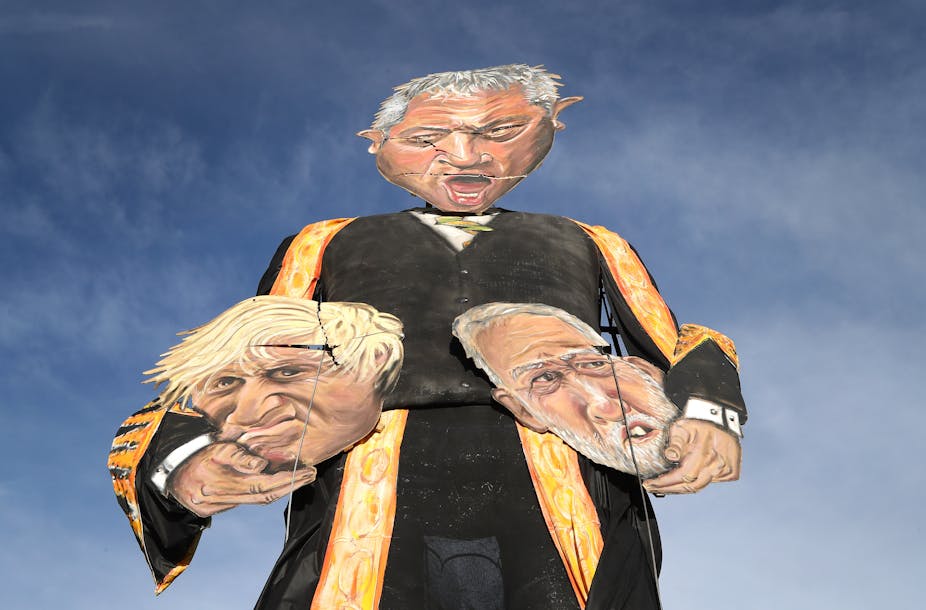Much has been made of the digital election in the build up to the general election campaign. Newspapers and broadcasters are determined not to be caught napping, as they were in 2017 when Labour’s digital campaign ran rings around its opponents.
What does the political parties’ use of digital media tell us in these first few days of campaigning? Firstly, that in the two years since the last campaign, things have moved on apace. Labour can no longer be certain of dominance across all platforms, despite having by far the largest digital reach.

Twitter is still where Labour can draw on large numbers of supporters, but other platforms are less dominated by the left wing.
Labour’s flying start
Taking a snapshot of the seven days since parliament voted for an election on October 29, it is apparent that Labour’s messages attacking the rich are being well-received on social media.

Perhaps surprisingly, users reacted most positively to text-based content on Twitter and Facebook. Bar prime minister Boris Johnson being pictured watching the Rugby World Cup final in an England shirt, all the most-liked posts were short text-based statements.
That is despite the Conservatives, Labour and the Liberal Democrats all launching their respective campaigns with glossy and expensive looking videos.

Instagram went its own way. All the top posts were videos.
The most successful by far was a short six-second behind-the-scenes clip posted on October 29 of Labour leader Jeremy Corbyn declaring: “We’re back and we’re ready to do it all over again” as he prepared his party to back the Early Parliamentary General Election Act in parliament.

Corbyn on the front foot
Some pundits had suggested that Corbyn might be used less prominently in this campaign, given his poor performing personal approval ratings. But he has already given lie to that theory, featuring heavily in Labour’s digital onslaught.
Slickly produced videos featured Corbyn repeating his key messages, defending the NHS and attacking Tory austerity, inter-cut with slowed footage of “ordinary” people and set to an uplifting soundtrack.
Foremost among these was an impressive launch promo that neatly encapsulated the highs of Corbyn’s four years as Labour leader and his anti-establishment message. Showing just how sharp the Labour digital team is, the video was put live on Facebook just a couple of minutes after the general election bill was backed in the House of Commons.

In 2017, the Conservatives’ digital campaign was stilted and struggled to engage audiences. The then prime minister, Theresa May, did not come across well on video and the campaign’s focus on Brexit left it looking flat compared to Labour’s promotion of Corbyn as leader of an exciting social movement.
This time the Conservatives are determined not to be outflanked, particularly on the NHS. Johnson spent much of the week in scrubs visiting hospitals. Frequent posts showed him with doctors and nurses, hammering home his message that the NHS is safe in Conservative hands.
Corbyn replied by sharing a Momentum video of an interview with a medical student who protested against what she called the “PR stunt” visit by Johnson to Addenbrooke’s hospital in Cambridge.
Positive visions
The parties’ digital teams were quick to promote supportive press stories or clip interviews from broadcast output if it matched their messages. The most watched Facebook video of the week, with almost three quarters of a million views, was a clip from the BBC’s Question Time posted by the Conservatives, which showed a young man lambasting the Liberal Democrat and Labour parties’ Brexit policies.
Thus far, much of the content across all platforms has been about framing the positive visions the parties have for their campaigns, whether it is “Backing Boris to get Brexit Done” for the Tories, “Rebuilding Britain” for Labour or “Stopping Brexit to Build a Brighter Future” for the Lib Dems.
But given the traction negative content is gaining on Facebook and Twitter, don’t expect that to last. In 2017, some of the most watched videos on social media were attack ads.

Given how volatile this election is expected to be, it won’t be long before the knives come out again.


